Top 20 Mumbai Tourist Destinations: Explore the Best of Mumbai
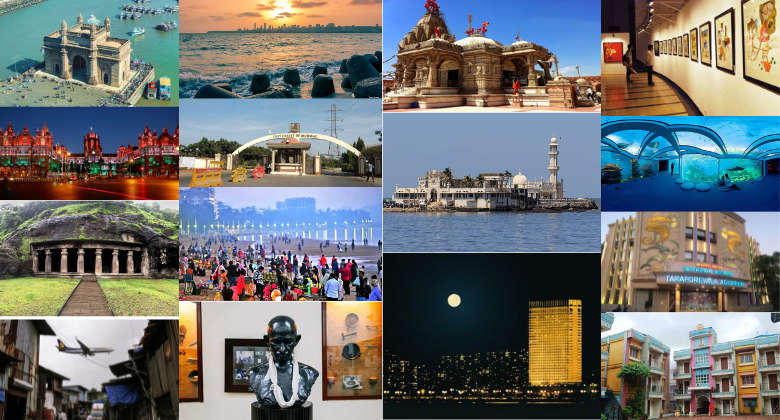
Mumbai is a city that is full of life and energy. It is a melting pot of cultures, with people from all over India and the world calling it home. There is something for everyone in Mumbai, from the bustling markets and street food to the iconic landmarks and world-class museums. Whether you are interested in history, culture, or simply experiencing the hustle and bustle of a big city, Mumbai is a place that you will never forget.
Here are some of the reasons why you should visit Mumbai at least once:
- To experience the magic of Bollywood. Mumbai is the home of Bollywood, the Hindi film industry. If you are a fan of Indian cinema, then you will definitely want to visit Mumbai and see where your favorite movies are made.
- To explore the city’s rich history. Mumbai has a long and fascinating history, dating back to the 16th century. There are many historical landmarks in the city, such as the Gateway of India, the Chhatrapati Shivaji Maharaj Terminus, and the Elephanta Caves.
- To sample the city’s delicious street food. Mumbai is a foodie’s paradise, with street food stalls selling everything from vada pav to pani puri. You can find food from all over India in Mumbai, so you are sure to find something to your taste.
- To experience the city’s vibrant culture. Mumbai is a city that is constantly changing and evolving. There is always something new to see and do, from attending a Bollywood dance performance to exploring the city’s many art galleries.
If you are looking for a city that is full of life, energy, and culture, then Mumbai is the place for you. I highly recommend visiting Mumbai at least once in your lifetime.
Contents
Here is a list of 20 places to visit in Mumbai:
1. Gateway of India:
The Gateway of India is an arch monument located in Mumbai, India. It was built in the early 20th century to commemorate the landing of King George V and Queen Mary in Mumbai in 1911. The Gateway is made of basalt and is 26 meters (85 feet) high. It is a popular tourist destination and is often used as a backdrop for Bollywood films.

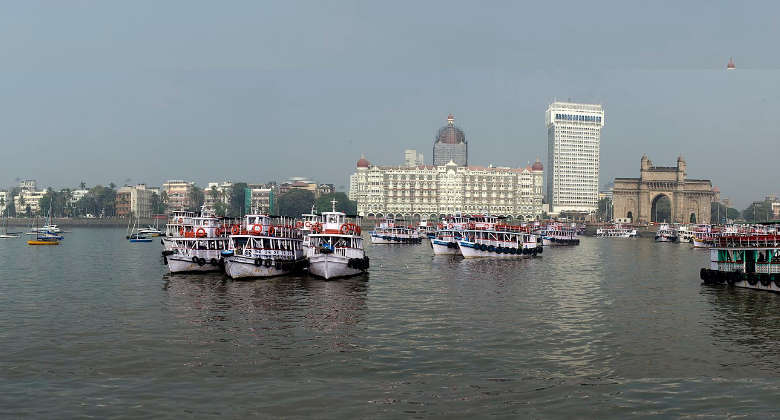
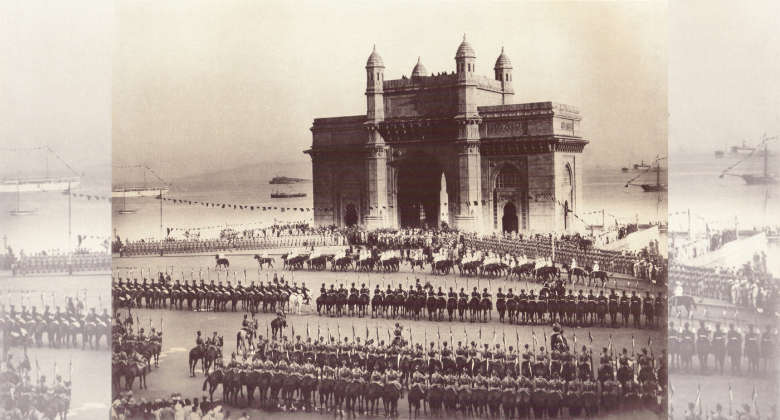

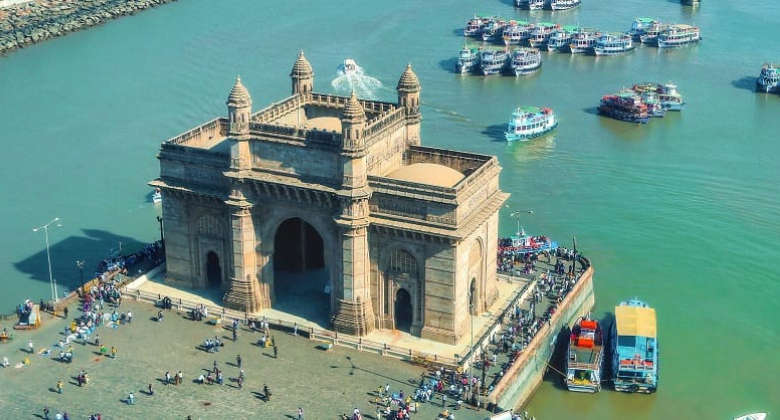
The Gateway of India is located at Apollo Bunder in South Mumbai, at the end of Chhatrapati Shivaji Marg. It is close to the Taj Mahal Palace Hotel and the Nariman Point financial district. The Gateway is open to the public and is a popular spot for photography and sightseeing.
The Gateway of India is a symbol of Mumbai and India’s colonial past. It is a reminder of the city’s role as a gateway to India for British colonial officials and visitors. However, the Gateway is also a symbol of India’s independence. It was from the Gateway that the last British troops left India in 1948.
Today, the Gateway of India is a popular tourist destination and a symbol of Mumbai’s rich history and culture.
2. Chhatrapati Shivaji Maharaj Terminus:
Chhatrapati Shivaji Maharaj Terminus (CSMT), formerly known as Victoria Terminus, is a UNESCO World Heritage Site and one of the most beautiful train stations in the world. It is located in Mumbai, India, and was built in the late 19th century. The station is a blend of Gothic, Victorian, and Indian architectural styles.
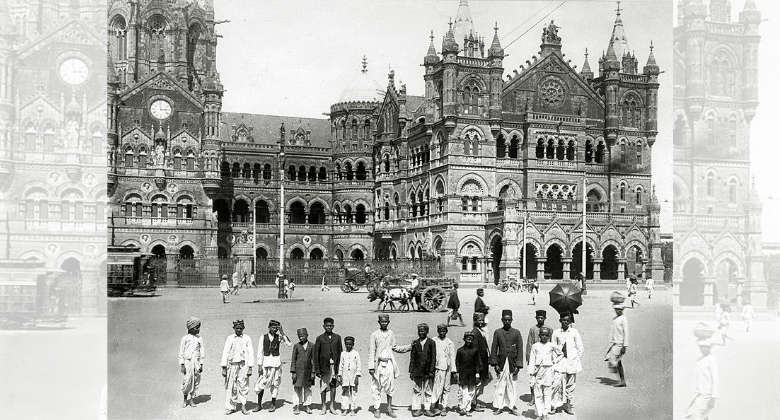
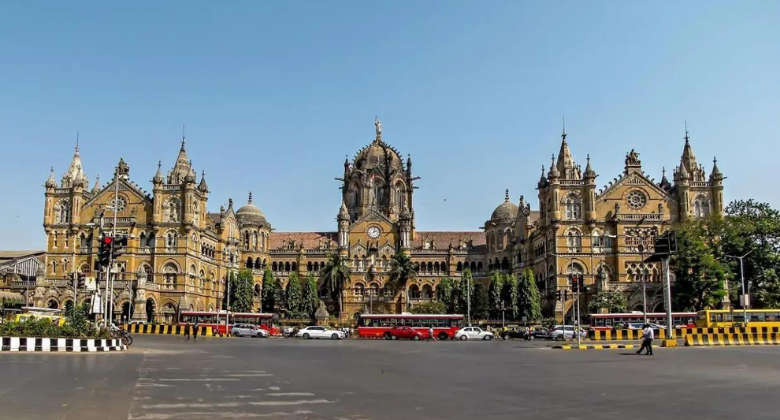


CSMT is located in the heart of Mumbai, in the Bori Bunder area. It is the headquarters of the Central Railway of India and is one of the busiest train stations in the country. The station has 18 platforms and serves both long-distance and suburban trains.
CSMT is a masterpiece of Victorian Gothic architecture. The building is made of sandstone and limestone, and the interiors are lined with premium quality Italian marble. The station is decorated with statues, sculptures, and intricate carvings. The most famous of these is the statue of Queen Victoria, which is located at the entrance of the station.
CSMT is a symbol of Mumbai’s rich history and culture. It is a reminder of the city’s role as a major trading port during the British Raj. However, CSMT is also a symbol of India’s independence. It was from CSMT that the first Indian train departed after independence in 1947.
Today, CSMT is a popular tourist destination and a UNESCO World Heritage Site. It is a must-visit for anyone interested in architecture, history, or Indian culture.
3. Elephanta Caves:
Elephanta Caves are a group of rock-cut caves located on Elephanta Island, off the coast of Mumbai, India. The caves are dedicated to the Hindu god Shiva and date back to the 6th and 7th centuries. They are a UNESCO World Heritage Site and one of the most important archaeological sites in India.

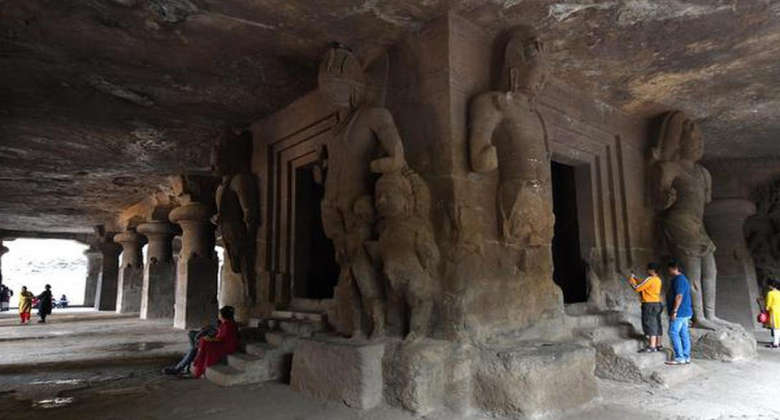
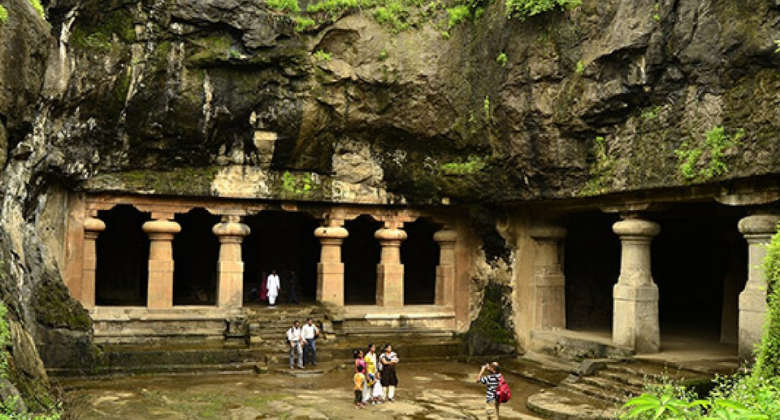
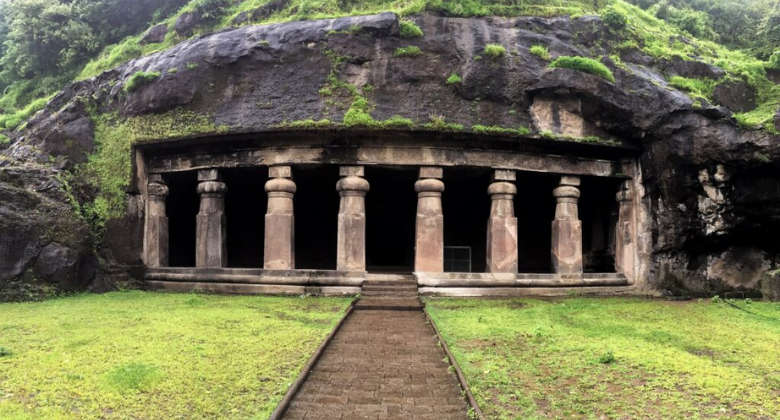
The caves are carved out of a massive basalt rock and consist of 10 caves. The most famous of these is the Great Cave, which is dedicated to Shiva. The Great Cave is home to a large statue of Shiva as Nataraja, the cosmic dancer. There are also statues of other Hindu gods and goddesses, as well as intricate carvings of animals and plants.
Elephanta Caves are a popular tourist destination and can be reached by ferry from Mumbai. The caves are open to the public and can be visited from 9:00 am to 5:00 pm.
The caves are named after the large stone elephant that once stood at the entrance to the island. The elephant was destroyed in the 18th century, but its trunk can still be seen on the island.
Elephanta Caves are a unique and fascinating example of Indian rock-cut architecture. They are a must-visit for anyone interested in Hindu art and culture.
4. Dharavi:
Dharavi is a large slum located in Mumbai, India. It is one of the most densely populated places in the world, with an estimated population of over 1 million people. Dharavi is home to a diverse range of people from all over India. The slum is known for its thriving informal economy, which includes a variety of industries, such as recycling, manufacturing, and handloom weaving.
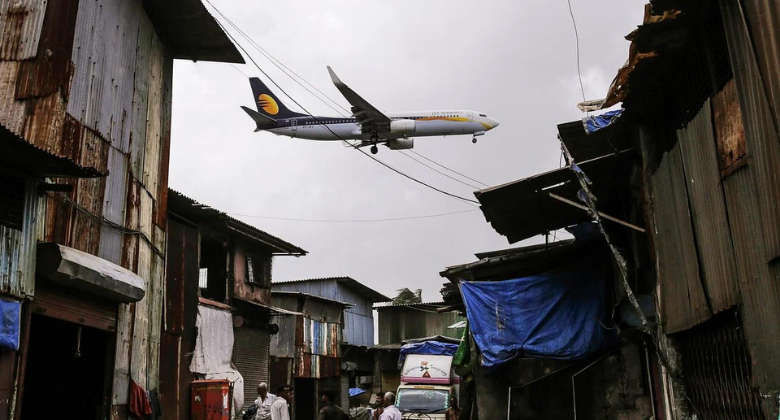
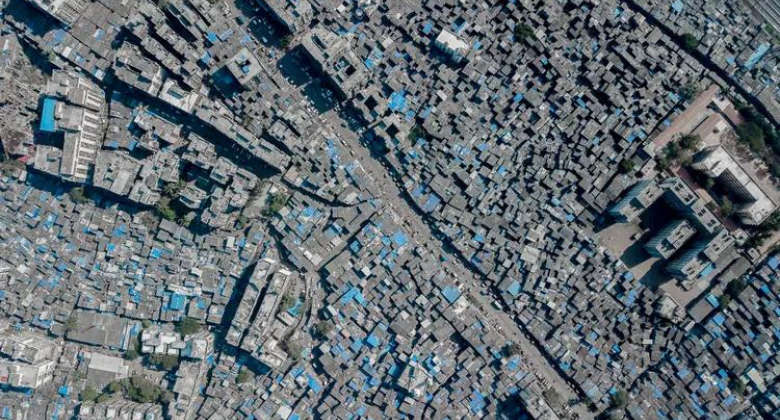

Dharavi is also home to a number of social enterprises, which are working to improve the lives of the slum’s residents. In recent years, Dharavi has become a popular tourist destination, with visitors drawn to the slum’s unique culture and vibrant community.
Dharavi is located in the heart of Mumbai, on the eastern coast of the island of Salsette. It is bounded by the Mahim Creek to the north, the Arabian Sea to the west, and the Sewri Creek to the south.
Dharavi is a complex and fascinating place. It is a challenge to live in Dharavi, but the slum’s residents are resilient and resourceful. Dharavi is a place of hope and opportunity, and it is a reminder that even in the most challenging circumstances, people can thrive.
5. Marine Drive:
Marine Drive is a 3.6-kilometer (2.2-mile) long crescent-shaped waterfront promenade in Mumbai, India. It is one of the most iconic landmarks in the city and is a popular spot for locals and tourists alike. The drive is lined with Art Deco buildings and offers stunning views of the Arabian Sea.

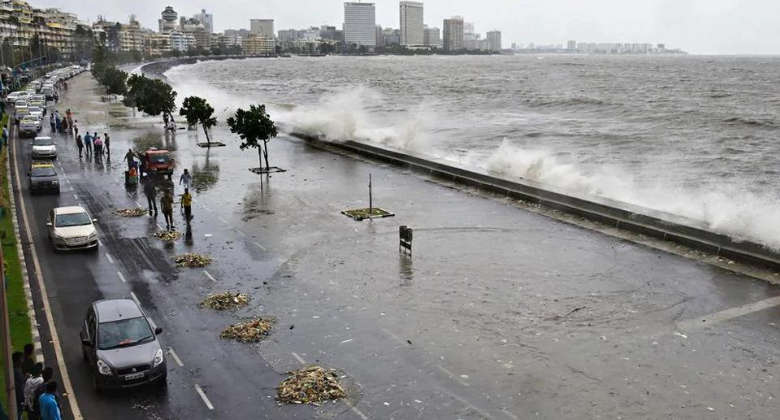
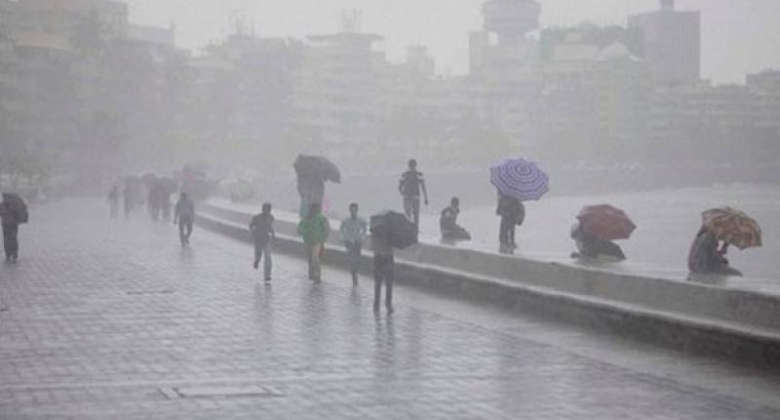


Marine Drive is located in South Mumbai, between Nariman Point and Chowpatty Beach. It is open to the public and is a popular spot for walking, jogging, and cycling. The drive is also a popular spot for people-watching and photography.
Marine Drive was built in the early 20th century and was originally called the Queen’s Necklace. The name was changed to Marine Drive in 1960. The drive is a popular spot for weddings and other special events.
Marine Drive is a symbol of Mumbai’s rich history and culture. It is a reminder of the city’s role as a major trading port during the British Raj. However, Marine Drive is also a symbol of Mumbai’s modernity. The drive is lined with Art Deco buildings, which are a reminder of the city’s golden age in the 1920s and 1930s.
Today, Marine Drive is a popular tourist destination and a must-visit for anyone visiting Mumbai. It is a beautiful and iconic landmark that offers stunning views of the Arabian Sea.
6. Mumbai University:
Mumbai University is a public university located in Mumbai, India. It is the oldest university in Mumbai and one of the most prestigious universities in India. The university was founded in 1857 and has since awarded over 2 million degrees.
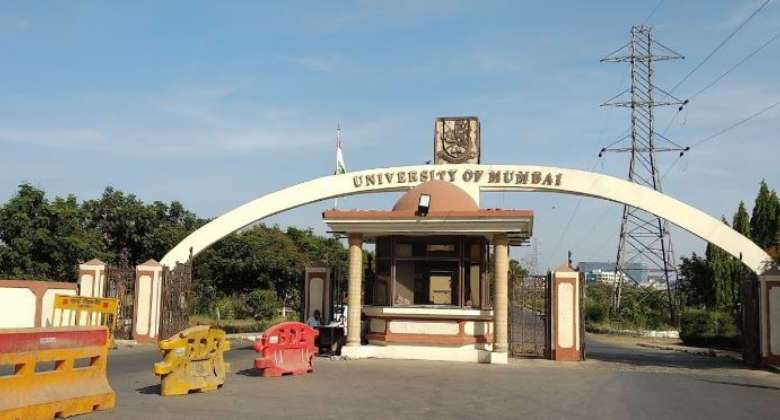
Mumbai University is a residential university and has its main campus in South Mumbai. The university also has several off-campus centers located in different parts of the city. The university offers a wide range of undergraduate and postgraduate programs in a variety of disciplines, including arts, science, commerce, law, and engineering.
Mumbai University is a popular choice for students from all over India. The university has a competitive admissions process and only accepts the best students. Mumbai University is a great place to study and offers a world-class education.
Some of the notable alumni of Mumbai University include:
- Indira Gandhi, the former Prime Minister of India.
- Sachin Tendulkar, the former Indian cricketer.
- Amitabh Bachchan, the Indian actor.
- Kiran Bedi, the former Police Commissioner of Delhi.
Mumbai University is a symbol of Mumbai’s rich history and culture. It is a reminder of the city’s role as a major educational hub in India. However, Mumbai University is also a symbol of Mumbai’s modernity. The university is a leading institution of higher learning and offers a world-class education.
7. Juhu Beach:
Juhu Beach is a popular beach located in Mumbai, India. It is one of the most famous beaches in India and is a popular spot for locals and tourists alike. The beach is known for its long stretch of white sand, its clear blue waters, and its lively atmosphere.



Juhu Beach is located in the western suburbs of Mumbai, in the suburb of Juhu. The beach is about 4.5 kilometers (2.8 miles) long and is backed by a promenade lined with shops, restaurants, and cafes. The beach is also home to a number of water sports activities, such as jet skiing, parasailing, and windsurfing.
Juhu Beach is a popular spot for sunbathing, swimming, and people-watching. The beach is also a popular spot for Bollywood shoots and music videos.
Juhu Beach is a symbol of Mumbai’s rich history and culture. It is a reminder of the city’s role as a major seaside resort in the early 20th century. However, Juhu Beach is also a symbol of Mumbai’s modernity. The beach is a popular spot for young people and is a symbol of the city’s vibrant nightlife.
Today, Juhu Beach is a popular tourist destination and a must-visit for anyone visiting Mumbai. It is a beautiful and iconic beach that offers a variety of activities and attractions.
8. Gandhi National Memorial:
The Gandhi National Memorial, formerly known as Mani Bhavan, is a museum dedicated to the life and work of Mahatma Gandhi, the leader of the Indian independence movement. The memorial is located in Mumbai, India, and was Gandhi’s home from 1917 to 1930.

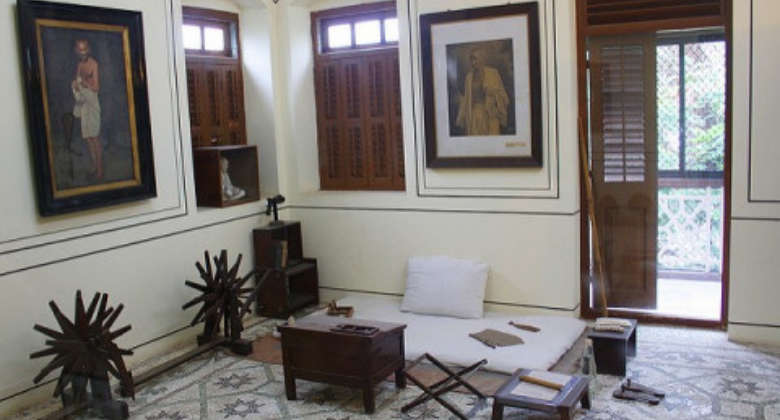

The memorial is a two-story building with a garden. The ground floor houses a museum with exhibits on Gandhi’s life and work. The first floor has been preserved as it was when Gandhi lived there. The memorial also has a library, a research center, and a Gandhian bookstore.
The Gandhi National Memorial is a popular tourist destination and is a must-visit for anyone interested in Gandhi’s life and work. It is a beautiful and serene place that offers a glimpse into the life of one of the most important figures in Indian history.
The Gandhi National Memorial is located in the Dadar suburb of Mumbai. It is open to the public from 9:30 am to 5:30 pm, seven days a week. The entrance fee is INR 5 for adults and INR 2 for children.
9. Shankaracharya Hill Temple:
The Shankaracharya Hill Temple is a Hindu temple located on the top of Malabar Hill in Mumbai, India. It is dedicated to Adi Shankaracharya, a 9th-century Hindu philosopher and theologian. The temple is a popular pilgrimage site for Hindus from all over India.

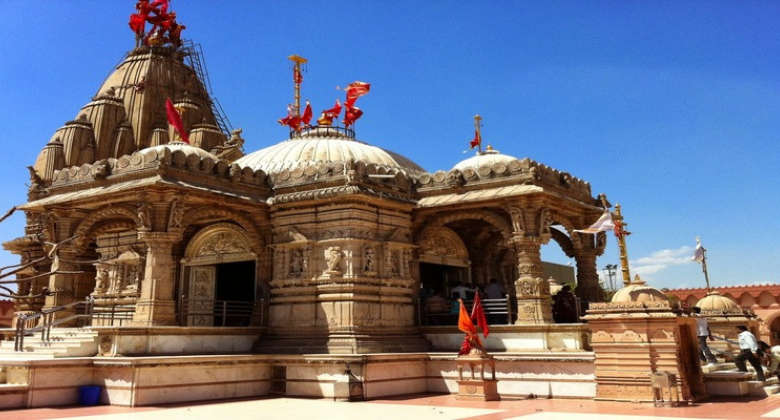
The temple was built in the 18th century by the Maratha ruler, Shivaji Maharaj. The temple is a white marble structure with a pyramidal roof. The temple has a central hall with a statue of Adi Shankaracharya. The temple also has a number of smaller shrines dedicated to other Hindu deities.
The Shankaracharya Hill Temple is a popular tourist destination and offers stunning views of the city of Mumbai. The temple is open to the public from 6:00 am to 10:00 pm, seven days a week. The entrance fee is INR 5 for adults and INR 2 for children.
The temple is located in the Malabar Hill area of Mumbai, near the Hanging Gardens. The temple can be reached by car, bus, or taxi.
10. Haji Ali Dargah:
Haji Ali Dargah is a Muslim shrine located on an islet off the coast of Mumbai, India. It is dedicated to Sayyed Pir Haji Ali Shah Bukhari, a wealthy Muslim merchant from Bukhara (modern-day Uzbekistan) who gave up all his worldly possessions before making a pilgrimage to Mecca.

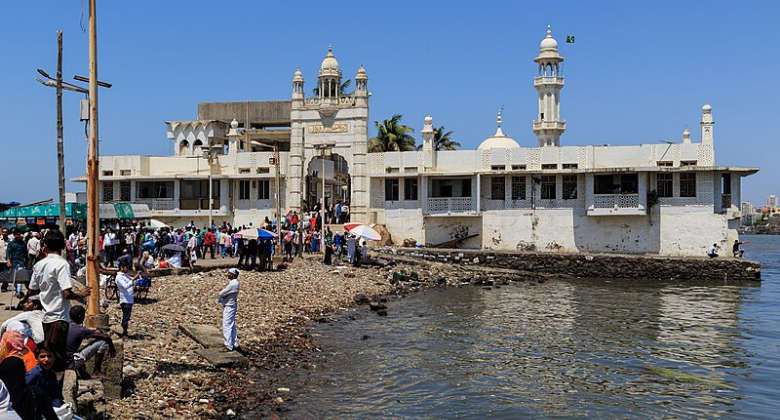

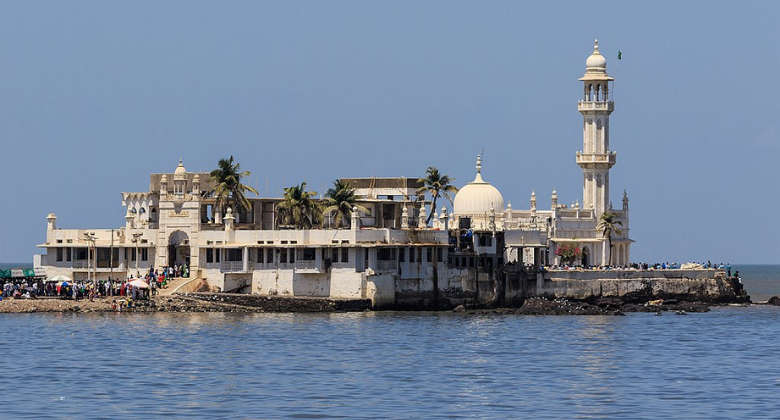
The dargah was built in 1431 and is one of the most popular pilgrimage sites in Mumbai. It is a popular spot for both Muslims and non-Muslims alike.
The dargah is a white marble structure with a dome and four minarets. It is located on a small islet that is connected to the mainland by a causeway. The causeway is submerged at high tide, so the dargah is only accessible at low tide.
The dargah is open to the public from 6:00 am to 10:00 pm, seven days a week. The entrance fee is INR 25 for adults and INR 10 for children.
The dargah is located in the Worli area of Mumbai, near the Bandra-Worli Sea Link. The dargah can be reached by car, bus, or taxi.
11. Nariman Point:
Nariman Point is a peninsula in South Mumbai, India, that is home to the financial district of Mumbai. It is one of the most important commercial and financial centers in India.
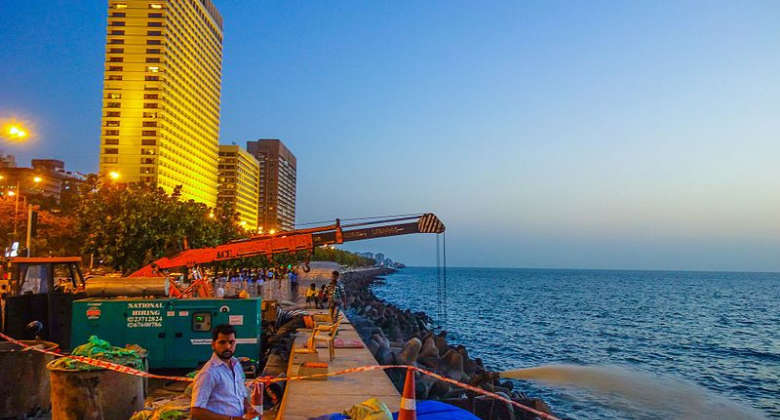
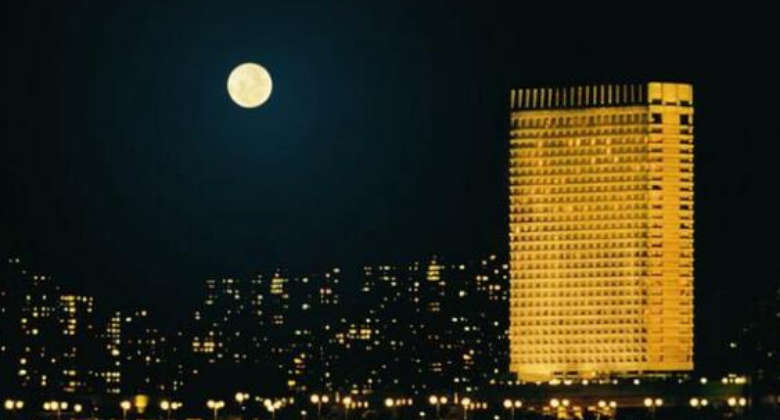


Nariman Point is named after Sir Homi Mody Nariman, the first Indian to be appointed as the Chief Justice of Bombay. The area was developed in the early 20th century and was originally known as Apollo Bunder.
Nariman Point is home to a number of high-rise buildings, including the Reserve Bank of India, the Bombay Stock Exchange, and the Oberoi Trident Hotel. The area is also home to a number of parks and gardens, including the Hanging Gardens and the Oval Maidan.
Nariman Point is a popular tourist destination and is a must-visit for anyone interested in the financial and commercial history of Mumbai. The area is also a great place to go shopping and to enjoy the views of the Arabian Sea.
Nariman Point is located at the southern tip of the island of Mumbai. It is easily accessible by car, bus, or train. The nearest railway station is the Churchgate station.
12. Colaba Causeway:
Colaba Causeway is a popular shopping street located in Colaba, Mumbai, India. It is one of the oldest and most famous streets in Mumbai and is a great place to find souvenirs and local handicrafts.
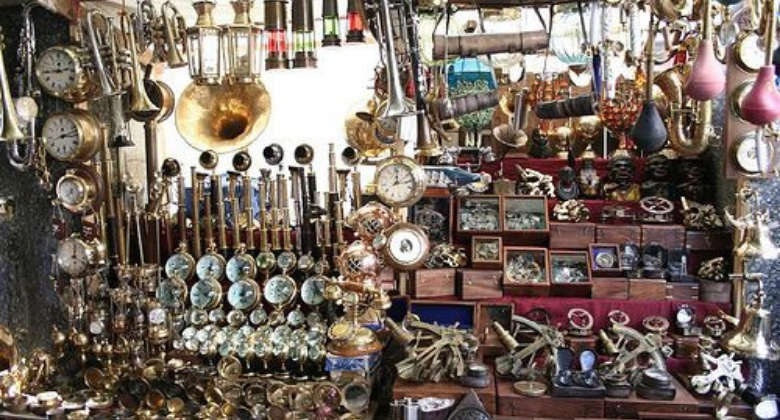
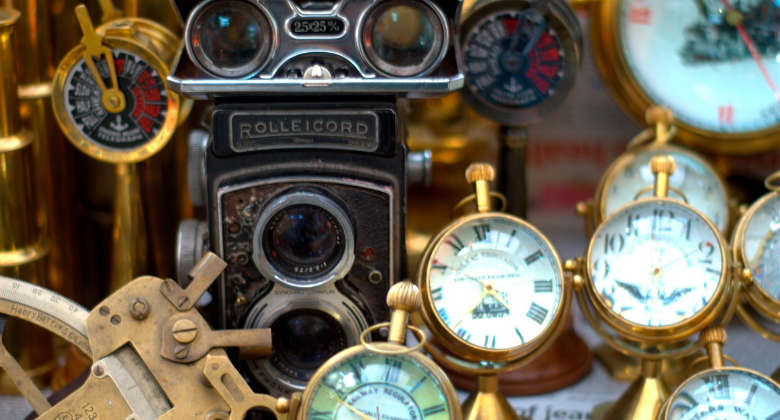


Colaba Causeway is a pedestrian-only street that is lined with shops selling a variety of goods, including clothes, jewelry, souvenirs, and antiques. The street is also home to a number of restaurants and cafes.
Colaba Causeway is a popular tourist destination and is a must-visit for anyone visiting Mumbai. The street is a great place to do some shopping and to experience the vibrant atmosphere of Colaba.
Colaba Causeway is located in the Colaba district of Mumbai. It is easily accessible by car, bus, or taxi. The nearest railway station is the Churchgate station.
Here are some additional details about Colaba Causeway:
- The street was built in the early 19th century by the British colonial government.
- The street is named after the Colaba district of Mumbai, which was originally a Portuguese settlement.
- Colaba Causeway is a popular spot for street performers, such as musicians and magicians.
- The street is also a popular spot for people-watching.
13. Prince of Wales Museum:
The Prince of Wales Museum, formerly known as the Bombay Museum, is a museum located in Mumbai, India. It is one of the oldest and largest museums in India and houses a collection of over 60,000 artifacts, including sculptures, paintings, textiles, and antiquities.

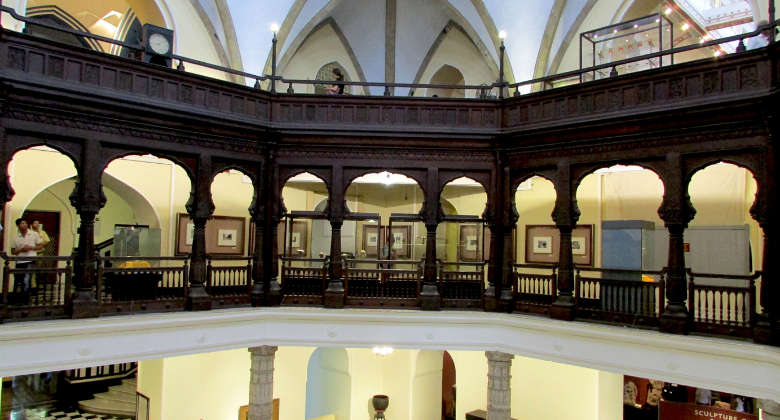
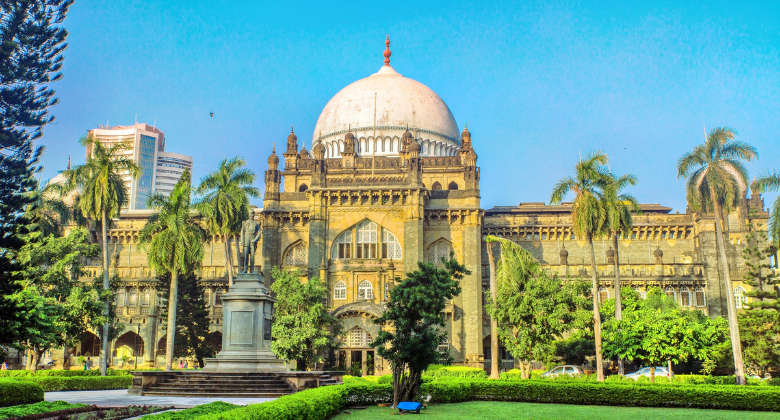
The museum was founded in 1904 by the British colonial government and was named after the Prince of Wales, who later became King Edward VII. The museum is located in the heart of Mumbai, in the Fort district.
The museum is divided into three main sections: the Art Gallery, the Archaeological Gallery, and the Natural History Gallery. The Art Gallery houses a collection of Indian and Western paintings, sculptures, and decorative arts. The Archaeological Gallery houses a collection of Indian antiquities, including sculptures, coins, and jewelry. The Natural History Gallery houses a collection of Indian wildlife, including animals, birds, and insects.
The Prince of Wales Museum is a popular tourist destination and is a must-visit for anyone interested in Indian art, history, and culture. The museum is open to the public from 10:00 am to 5:00 pm, seven days a week. The entrance fee is INR 25 for adults and INR 15 for children.
Here are some additional details about the Prince of Wales Museum:
- The museum is a Grade I heritage structure and is one of the most important architectural landmarks in Mumbai.
- The museum has been expanded several times since its inception and now houses a collection of over 60,000 artifacts.
- The museum is a popular spot for school field trips and is also a popular venue for cultural events.
14. National Gallery of Modern Art:
The National Gallery of Modern Art (NGMA) is an art gallery located in Mumbai, India. It is one of the premier art galleries in India and houses a collection of over 17,000 works of art, including paintings, sculptures, and prints.


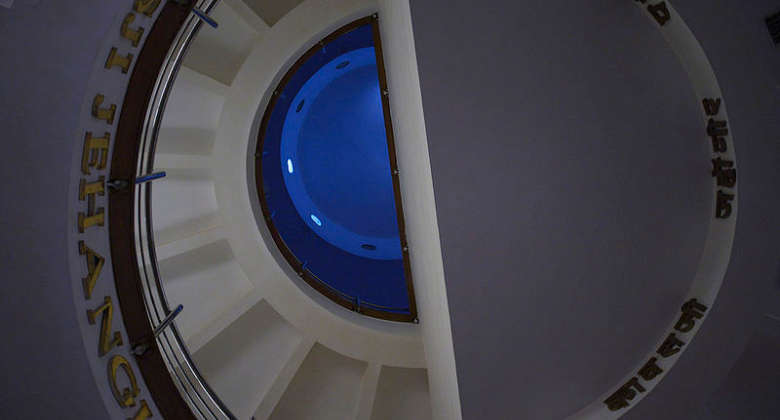
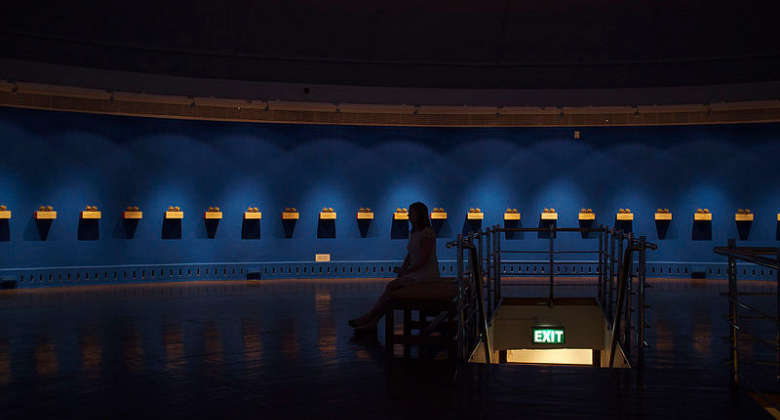
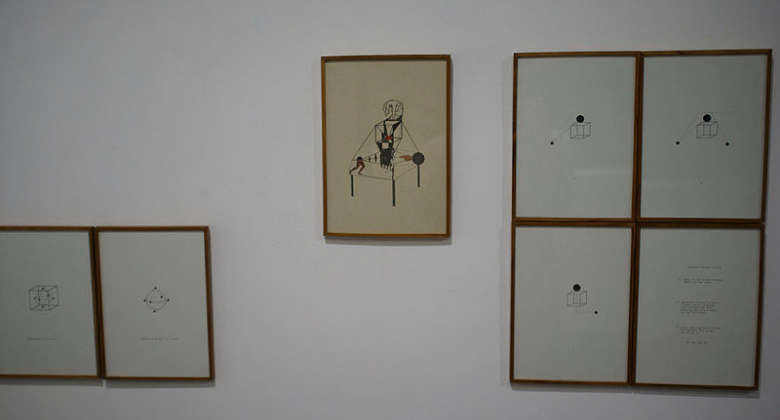
The NGMA was founded in 1954 by the Government of India and is located in the heart of Mumbai, in the Fort district. The gallery is housed in a beautiful building that was designed by the architect, Charles Correa.
The NGMA’s collection of modern and contemporary art includes works by some of the most important Indian artists, such as Raja Ravi Varma, Amrita Sher-Gil, and M.F. Husain. The gallery also has a collection of international art, including works by Pablo Picasso, Henri Matisse, and Salvador Dali.
The NGMA is a popular tourist destination and is a must-visit for anyone interested in Indian art. The gallery is open to the public from 10:00 am to 5:00 pm, seven days a week. The entrance fee is INR 25 for adults and INR 15 for children.
Here are some additional details about the NGMA:
- The gallery is a Grade I heritage structure and is one of the most important architectural landmarks in Mumbai.
- The gallery has been expanded several times since its inception and now houses a collection of over 17,000 works of art.
- The gallery is a popular spot for school field trips and is also a popular venue for cultural events.
- The NGMA has branches in Delhi, Bangalore, and Chandigarh.
15. Jehangir Art Gallery:
Jehangir Art Gallery is a non-profit art gallery located in Mumbai, India. It was founded in 1952 by Sir Cowasji Jehangir, Second Baronet, a leading citizen of his time. The gallery is located in the heart of Mumbai, in the Kala Ghoda area.
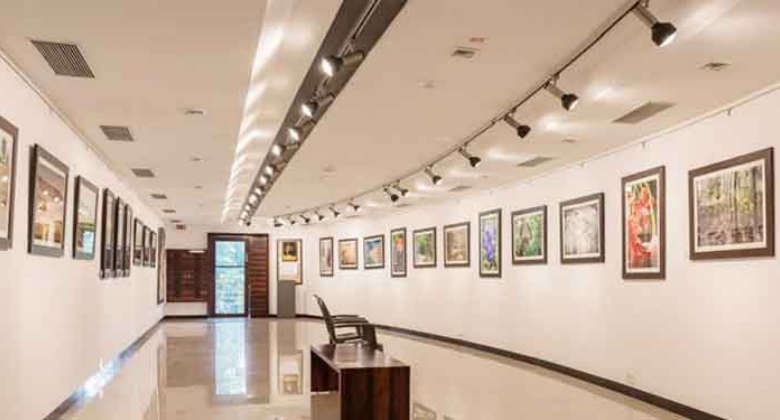
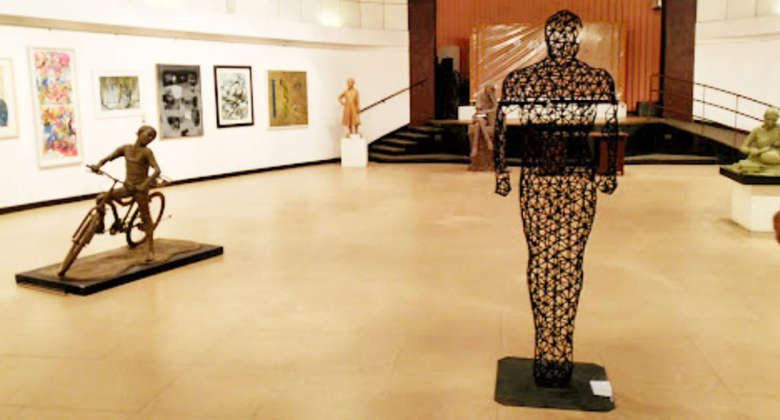


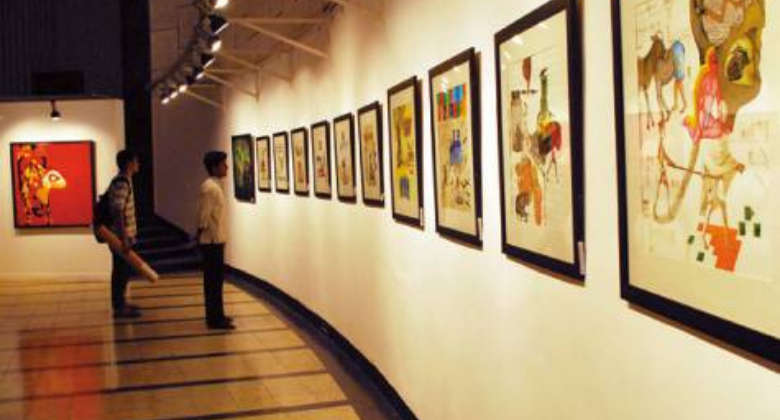
The Jehangir Art Gallery is a premier venue for the exhibition of modern and contemporary art in India. It has hosted solo and group exhibitions of works by some of the most important Indian artists, such as MF Husain, Amrita Sher-Gil, and Raja Ravi Varma. The gallery also hosts a variety of cultural events, such as workshops, talks, and performances.
The Jehangir Art Gallery is a popular tourist destination and is a must-visit for anyone interested in Indian art. The gallery is open to the public from 11:00 am to 6:00 pm, seven days a week. The entrance fee is INR 10 for adults and INR 5 for children.
Here are some additional details about the Jehangir Art Gallery:
- The gallery is a Grade II heritage structure and is one of the most important architectural landmarks in Mumbai.
- The gallery is named after the Mughal emperor, Jehangir, who was a patron of the arts.
- The gallery is a popular spot for art lovers, students, and tourists.
- The gallery has a small library and a research center.
16. Taraporewala Aquarium:
The Taraporewala Aquarium is a public aquarium located in Mumbai, India. It is one of the oldest and largest aquariums in Asia and houses a collection of over 2,000 species of marine life, including fish, sharks, rays, and jellyfish.
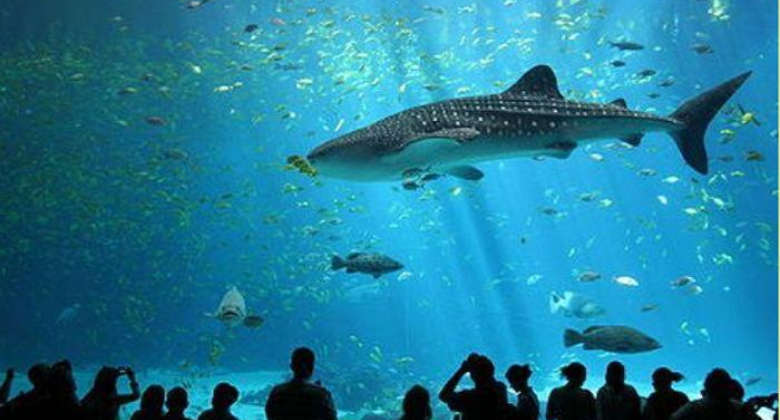



The aquarium was founded in 1905 by Dr. J.B.H. Taraporewala, a physician and philanthropist. The aquarium is located in the heart of Mumbai, in the Cumbala Hill area.
The Taraporewala Aquarium is divided into several sections, including the Fresh Water Gallery, the Marine Gallery, and the Turtle Gallery. The Fresh Water Gallery houses a collection of freshwater fish, such as carp, catfish, and loaches. The Marine Gallery houses a collection of marine fish, such as sharks, rays, and jellyfish. The Turtle Gallery houses a collection of turtles, tortoises, and terrapins.
The Taraporewala Aquarium is a popular tourist destination and is a must-visit for anyone interested in marine life. The aquarium is open to the public from 10:00 am to 5:00 pm, seven days a week. The entrance fee is INR 25 for adults and INR 15 for children.
Here are some additional details about the Taraporewala Aquarium:
- The aquarium is a Grade II heritage structure and is one of the most important architectural landmarks in Mumbai.
- The aquarium has been expanded several times since its inception and now houses a collection of over 2,000 species of marine life.
- The aquarium is a popular spot for school field trips and is also a popular venue for cultural events.
17. Dhobi Ghat:
Dhobi Ghat is a massive open-air laundry in Mumbai, India. It is the world’s largest laundry, and it is estimated that over 100,000 kilograms of laundry are washed here every day.

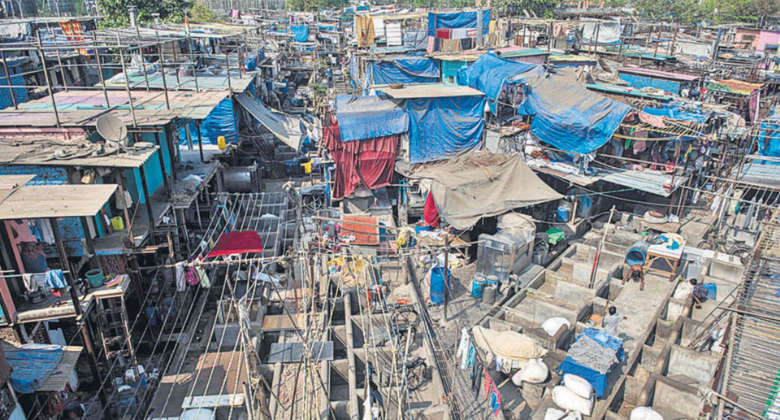
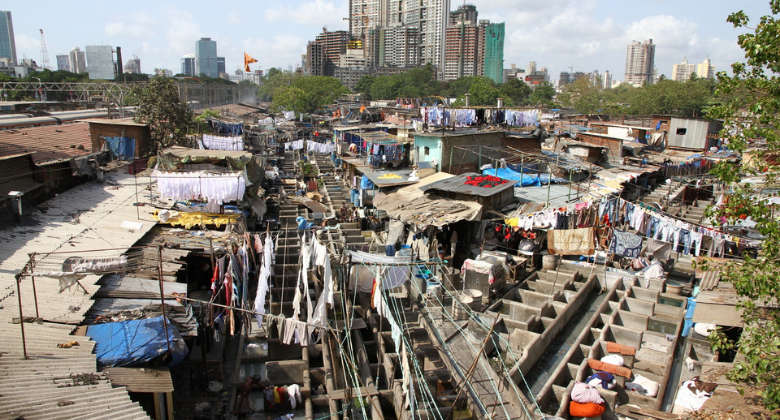
Dhobi Ghat is located in the heart of Mumbai, in the Mahalaxmi area. It is a sprawling complex of concrete slabs and wash lines, and it is a hive of activity from early morning until late at night.
The washermen at Dhobi Ghat are known as dhobis, and they are a caste of people who have traditionally been employed in laundry work. The dhobis at Dhobi Ghat wash clothes from all over Mumbai, and they use a variety of methods, including hand-washing, machine-washing, and dry-cleaning.
Dhobi Ghat is a fascinating place to visit, and it is a great way to see a slice of everyday life in Mumbai. It is also a popular tourist destination, and it is a great place to take photos.
Here are some additional details about Dhobi Ghat:
- Dhobi Ghat is a UNESCO World Heritage Site.
- The name “Dhobi Ghat” comes from the Marathi word “dhob”, which means “washerman”.
- Dhobi Ghat is open to the public, and it is a free to visit.
- Dhobi Ghat is a great place to see the traditional way of laundry work.
18. Film City:
Film City is a large film studio complex located in Goregaon, Mumbai, India. It is one of the largest film studios in Asia, and it is home to a number of sound stages, backlots, and workshops.


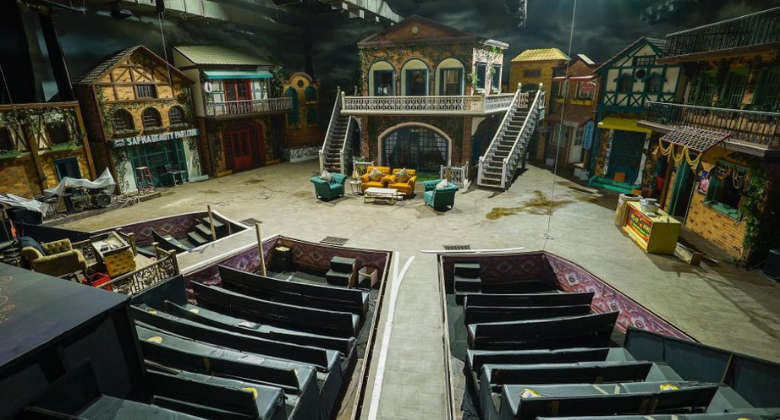

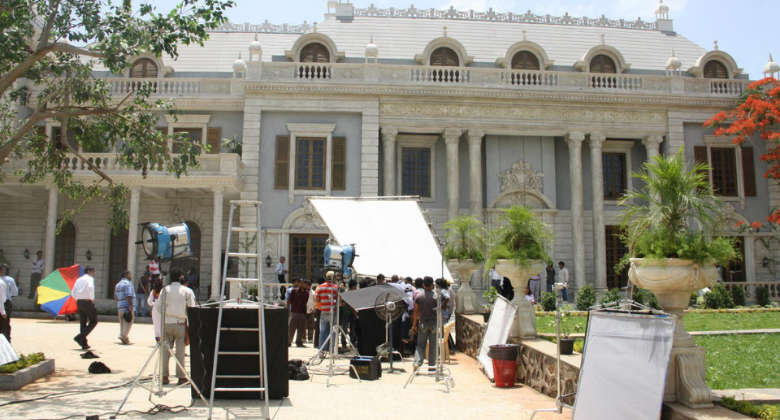
Film City was founded in 1971 by the Government of Maharashtra, and it is now operated by the Maharashtra Film, Television and Cultural Development Corporation. The studio complex is used to film a wide variety of movies and television shows, including Bollywood blockbusters, regional films, and television serials.
Film City is a popular tourist destination, and it offers a number of guided tours and behind-the-scenes experiences. Visitors can also visit the studio’s museum, which exhibits props, costumes, and other memorabilia from films and television shows that have been shot at Film City.
Here are some additional details about Film City:
- Film City is located in the western suburbs of Mumbai.
- The studio complex covers an area of over 500 acres.
- Film City has over 50 sound stages, as well as a number of backlots and workshops.
- Film City is home to a number of production facilities, including a dubbing studio, a post-production studio, and a VFX studio.
19. Mahalaxmi Temple:
Mahalaxmi Temple is a Hindu temple dedicated to the goddess Mahalakshmi, the goddess of wealth and prosperity. It is located in the Fort area of Mumbai, India.
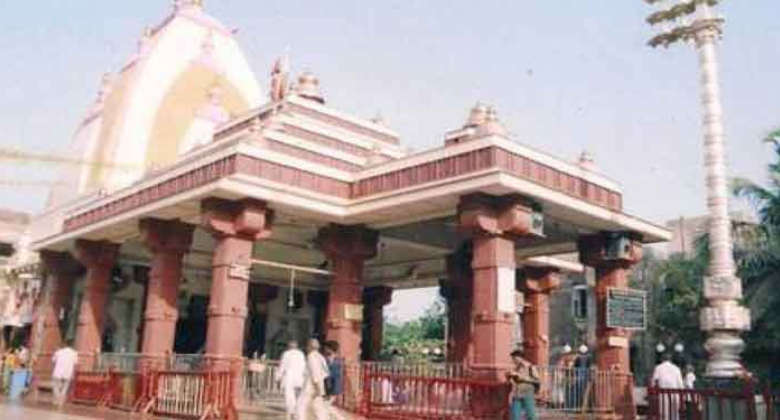
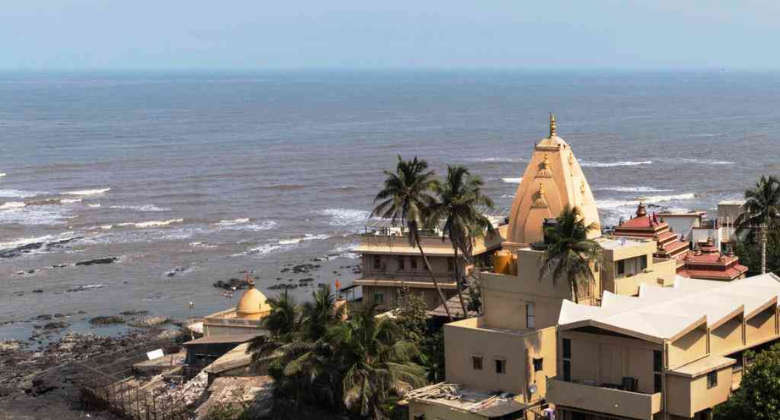
The temple was built in the 18th century by the Peshwas, the Maratha rulers of Maharashtra. The temple is a two-story structure with a pyramidal roof. The ground floor houses a shrine to Mahalakshmi, and the upper floor houses a shrine to her consort, Vishnu.
The temple is a popular pilgrimage site for Hindus from all over India. It is also a popular tourist destination, and it is known for its ornate architecture and its vibrant atmosphere.
The temple is open to the public from 6:00 am to 10:00 pm, seven days a week. The entrance fee is INR 5 for adults and INR 2 for children.
Here are some additional details about Mahalaxmi Temple:
- The temple is a Grade I heritage structure and is one of the most important architectural landmarks in Mumbai.
- The temple is named after the goddess Mahalakshmi, who is also known as the goddess of Mumbai.
- The temple is a popular spot for festivals and celebrations, such as the Mahalaxmi Puja, which is held in October/November.
- The temple is also a popular spot for weddings and other special events.
20. Aksa Beach:
Aksa Beach is a beautiful beach located in the Malad suburb of Mumbai, India. It is one of the most popular beaches in Mumbai, and it is known for its white sand, clear waters, and laid-back atmosphere.
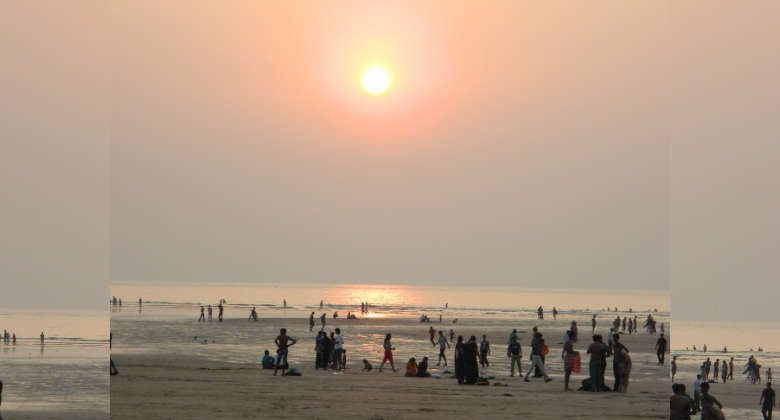

The beach is located on the Arabian Sea, and it is about 20 kilometers (12 miles) from the center of Mumbai. The beach is easily accessible by car, bus, or train.
Aksa Beach is a popular spot for swimming, sunbathing, and water sports. The beach is also a popular spot for picnics and for just relaxing and enjoying the view.
Here are some additional details about Aksa Beach:
- The beach is about 2 kilometers (1.2 miles) long.
- The beach is backed by a number of hills, which provide stunning views of the Arabian Sea.
- The beach is a popular spot for birdwatching, as it is home to a number of migratory birds.
- The beach is also a popular spot for yoga and meditation.

